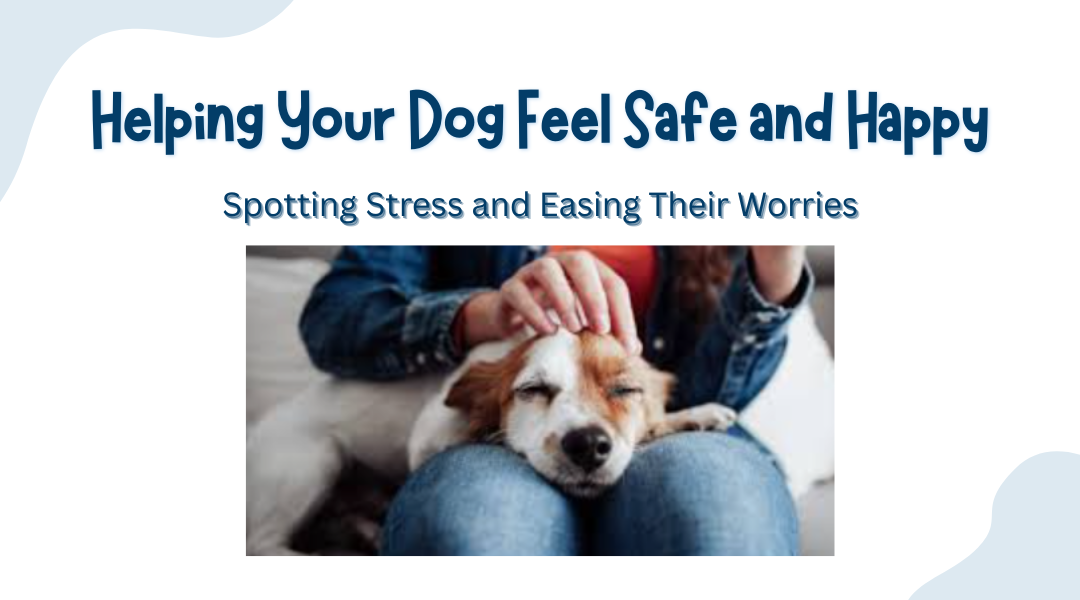Dogs aren’t so different from us—they feel stress, anxiety, and fear just like we do. And just like with people, those emotions can take a toll on their happiness, behavior, and even their health. The good news? When you know what to look for, you can help your dog feel more relaxed and secure.
How to Tell If Your Dog Is Stressed
Dogs can’t tell us when something’s bothering them, but their body language and behavior give plenty of clues. Here’s what to watch for:
- Excessive panting or drooling (when it’s not hot or after exercise)
- Restlessness—pacing, circling, or seeming unable to settle
- Whining, barking, or howling more than usual
- Shaking or trembling (not just from cold)
- Losing interest in food (especially if they normally love meals)
- Over-grooming—licking or chewing their paws, legs, or tail to the point of irritation
Some dogs also develop habits like digging at carpets, chewing furniture, or even having accidents indoors when they’re feeling anxious.
Separation Anxiety: When Your Dog Can’t Stand Being Alone
Ever come home to a shredded couch cushion or a dog that acts like you’ve been gone for years? That could be separation anxiety. Dogs with this issue panic when left alone, and their distress can lead to:
- Destructive chewing or scratching (especially near doors or windows)
- Nonstop barking or howling the second you leave
- Trying to escape crates, rooms, or even the house
- Potty accidents (even if they’re normally house-trained)
This is common in dogs who’ve had big changes—like a move, a new family member, or a shift in routine.
Noise Phobias: When Sounds Scare Them
Some dogs lose it during thunderstorms, fireworks, or even the vacuum cleaner. You might notice:
- Hiding (under beds, in closets, behind furniture)
- Shaking, panting, or clinging to you
- Barking or whining at the noise
How to Help Your Dog Feel Better
- Stick to a Routine
Dogs thrive on predictability. Feed them, walk them, and play with them at the same times each day. It helps them feel secure. - Give Them a Safe Space
Every dog should have a quiet spot to retreat to—a cozy crate, a favorite bed, or even a quiet corner with their blanket. Make it inviting with soft bedding and a familiar toy. - Reward Calm Behavior
If your dog stays relaxed during something that usually stresses them (like a doorbell ringing), toss them a treat. Over time, they’ll associate those moments with good things. - Don’t Accidentally Reward Fear
It’s tempting to cuddle a scared dog, but too much fuss can reinforce their anxiety. Instead, stay calm and reward them after they settle down. - Keep Them Busy
A bored dog is more likely to be anxious. Regular walks, puzzle toys, and training games keep their mind and body engaged. - Try Calming Aids
- Pheromone diffusers or collars (mimic natural calming scents)
- Pressure wraps (like Thundershirts—some dogs love the snug feeling)
- Calming treats (with ingredients like chamomile or melatonin)
- Socialize Them Gently
If your dog is nervous around people or other animals, introduce them slowly. Positive experiences build confidence.
Make Your Home a Stress-Free Zone
- Keep noise levels reasonable—loud TVs or sudden bangs can unsettle sensitive dogs.
- If they’re noise-phobic, try white noise or soft music to drown out scary sounds.
- Make sure their bed is comfy and in a quiet spot—good sleep helps mood.
- If they spend time outside, ensure the yard is secure and free from stressors (like aggressive neighbor dogs).
Final Thought: A Happy Dog Is a Healthy Dog
Just like us, dogs need emotional care as much as physical care. By paying attention to their stress signals and creating a calm, stable environment, you’re not just preventing bad behavior—you’re helping them live their best, happiest life. And really, isn’t that what every dog deserves?
